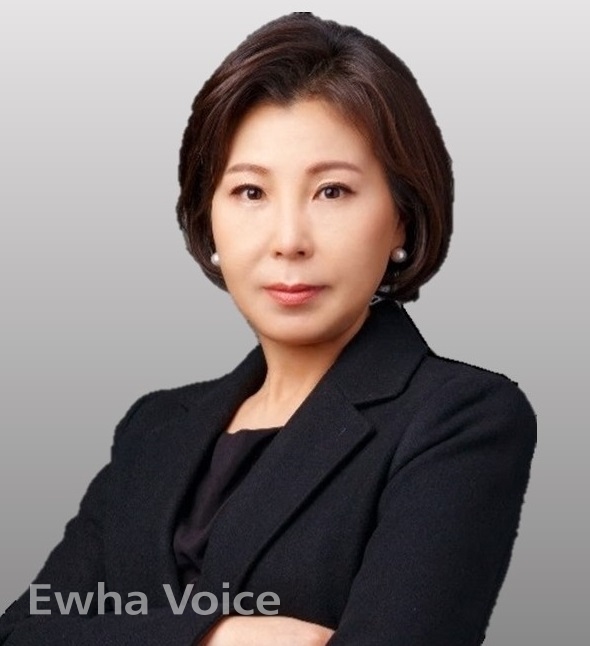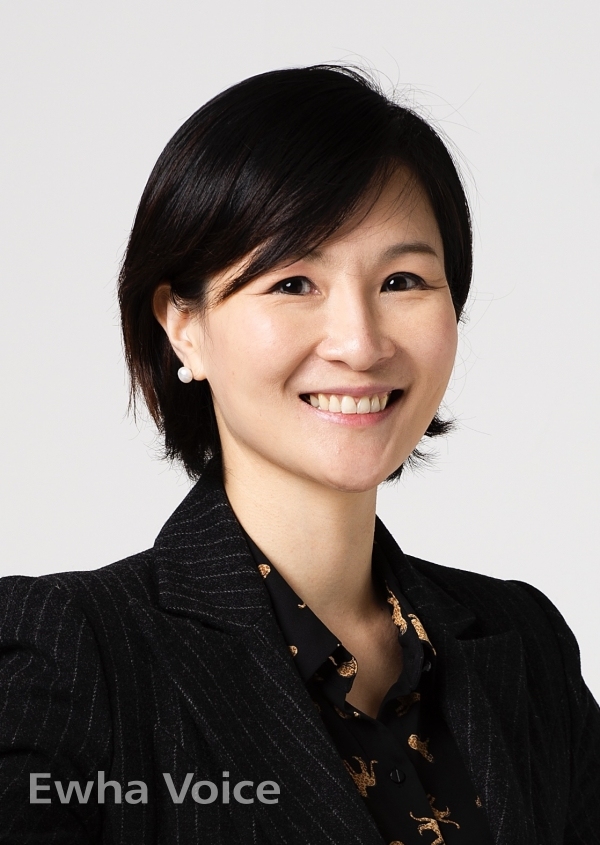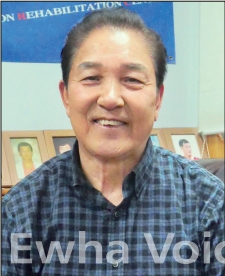By Jo Sungmin, Jeong Da-eun, Kim Minseo, Kim Soeun
The status quo of South Korea’s drug crimes : How to combat current rise in drug abuse cases

Over the past few years, South Korea has been grappling with a sharp rise in drug abuse cases, a problem that was not commonly considered a national obstacle until recently.
The issue has been brought to the forefront with the recent arrests of several Korean celebrities for drug use, including renowned actor Yoo Ah-in and singer Don Spike. In addition, highly addictive substances such as fentanyl have become increasingly accessible even to minors through social media retail, raising alarm about the sheer gravity of the situation.
The concerning trend has brought forth questions about the root of the problem and the effectiveness of existing measures to combat drug abuse in the country.
Park Jin Sil, head lawyer of Law Firm Jin Sil and a member of the Korean Association Against Drug Abuse (KAADA), expressed her concern about the current severity of drug abuse in South Korea.
Although the definition of a “drug-free nation” is not officially stated by any intergovernmental authority, Park noted that it is generally considered to be a country with under 20 drug crime cases for every 100,000 people. In the case of South Korea, with a population over 51,000,000, it would be ideal to have under 10,000 cases nationwide.
However, South Korea recorded around 18,000 drug abuse cases at its peak in 2020, discarding its long-held title as a drug-free nation.

Park disclosed that the basis of drug- prevention policies primarily involves the prevention of domestic drug supply, while also reducing its persistently increasing demand. Governmental agencies, customs control, the National Intelligence Service (NIS), and the police are responsible for preventing the influx of drugs from overseas.
Park noted that current legal policies to block drug supply currently require a significant increase in professional personnel.
Due to the rise of more strictly secured illegal sites, many of which belong to the Dark Web, specialized investigation techniques are needed as they trade in Bitcoin and operate in a more covert manner.
Regarding the actual drug abuse investigation processes, the National Forensic Service (NFS) conducts component inspections of drugs, requiring urine or hair testing of drug offenders. However, the current number of recommended personnel for this process is also highly inadequate, resulting in delayed turnaround time for results.
Park emphasized that it is crucial to actively supplement these areas with specialized and criminal investigators in each field and to increase recruitment efforts.
On the other hand, Park emphasized that decreasing demand for drugs involves the comparably difficult task of preventing people from purchasing and using circulating drugs.
“To achieve this, it is necessary to provide treatment to help them overcome addiction and avoid relapse,” she explained. “Both policies should be appropriately implemented, but so far the focus has primarily been on the supply-block policy, neglecting the importance of reducing demand.”
Park warned that drug crimes have an inherently different nature from other criminal cases due to the addictive nature of the illegal substances. As such, these cases cannot be resolved simply with harsh sentences or fines. Although many still consider it unreasonable for taxes to be allocated to drug rehabilitation, Park stressed that no government can permanently isolate addicts from society for their entire lives.
“Ultimately, if these individuals cannot return to society in a healthy manner, then the social cost falls on society and the nation,” Park said. “Unless government-funded rehabilitation facilities are effectively implemented, South Korea might spiral into the pit of severe substance abuse.”
Park expressed regret that the South Korean society stigmatizes drug addiction, making it difficult for individuals to reintegrate after drug use. She explained that there is no government- supported rehabilitation system for those who have been imprisoned or sentenced. Instead, individuals are left to manage their addiction on their own through seeking outpatient treatment or attending rehabilitation meetings, both of which are not easily accessible in South Korea.

Because of their limited capacity, Park emphasized that more funding and attention are needed in the field to train and support addiction specialists who can provide ongoing care for those struggling with substance addiction.
While sex education and alcohol or smoking prevention education are mandatory, Park pointed out that drug education is often discouraged by school officials due to concerns about stimulating curiosity, combined with the taboo nature of drugs within Korean society.
“Education is essential for drug prevention,” she asserted. “We must guide students to recognize the accurate substances and their consequences, and help them to exercise self-control.”
Professor Park MiRang from Hannam University’s Department of Police Science suggested that it may be necessary to implement specific drug courts such as the United States have long done, with judges and attorneys who specialize in drug abuse cases.
“Rather than looking at drug abuse cases with a punitive principle, we should work towards a system where the judicial system cooperates with psychiatrists to fully unroot this problem,” she said.
Professor Park agreed that severe lack of education on drug prevention itself largely contributes to initial drug use of the younger generation. Many young people only have a vague fear of drugs but lack general knowledge, never having been given the chance to consider the specific effects of drugs on their physical and mental health. As a result, they often cannot control their curiosity when urged by friends to try an illegal substance.
“In many parts of the United States, both carrots and sticks are used together when it comes to educating students about drugs,” Professor Park explained. “Police officers lecture directly at schools on the danger of drugs and its health risks, as well as what procedures one must go through if arrested for illegal drugs. The rigid education aims to make students fully aware of the severity of drug-related crimes.”
How far has Korea actually gone to deal with such situations? According to the Ministry of Health and Welfare of South Korea, only 21 hospitals were designated for the medical treatment of drug patients as of 2022.
However, aside from the official hospitals designated for drug treatment, the Drug Addiction Rehabilitation Center (DARC) has also been helping drug addicts return to their lives.

Lim Sang Hyeon, chief director of Gyeonggi-do DARC (GDARC), explained the role of DARC its rehabilitation procedure.
Founded in March 2019, GDARC has so far helped 45 inmates to recover from addiction and resume their lives as members of society. Currently accommodating 12 inmates, GDARC supports them through systematically structured schedules from 7 a.m. to 8 p.m.
For the differences between DARC and drug- designated hospitals, Lim emphasized that hospitals are only about detoxifying the drug residue by using medicine, as drug addiction is classified as a mental disease in South Korea.
“Detoxification is necessary; however, addicts naturally think of taking drugs again when they stop intaking medicine,” Lim said. “That is why simply relying on hospital or medical treatment cannot practically help addicts quit drugs. Instead, DARC provides training programs and helps inmates to have better life habits for their interpersonal relations and employment.”
Lim revealed that the current youngest inmate was in his 30s, but more than half of inmates are in their 20s now. GDARC is often asked by parents of teenage drug addicts whether their children can enter the facility. Unfortunately, as GDARC is not an organization officially approved by the government, they currently only accept adult patients.
Inmates of DARC initially sign up for a year-long program and extend their training depending on the individual's circumstances. During their 10th month of training, inmates have a group meeting, discussing whether they should extend or not. Lim stressed the importance of this session as peer inmates know best about each other’s conditions.
Lim concluded by pointing out the most significant problem of the current government policies regarding drug affairs is that they mostly focus on preventing people from getting addicted to drugs. He also added that not enough rehabilitation programs are provided for drug addicts.
“Unlike patients suffering from certain diseases, there are no exemplary treatments for drug addiction, which is why the addicts need to proceed to rehabilitation centers,” Lim remarked. “If the government, hospitals, and rehabilitation centers can do their best for addicts, it would not be hard to lower the drugging rate.”
How are South Korea’s drug issues affecting university students?

Unlike many other serious criminal cases, drug crimes are not limited to a certain social group.
Indeed, Professor Park MiRang acknowledged that depending on the type of drug, certain age groups or demographics may be more inclined to seek them. For example, psychoactive substances, such as psilocybin, are more commonly found amongst younger generations in urban settings, whereas poppy-extracted opium can be found more often in rural areas amongst the elderly.
However, Professor Park emphasized that due to the sheer accessibility of drugs nowadays, anyone and everyone looking can easily get their hands on illegal substances. She pointed out that often smoking marijuana or “popping pills” is seen by the younger generation as trendy or cool, often through the influence of mainstream media such as hip-hop culture.
Professor Park warned that when drug cases occur, they often involve other crimes that are not necessarily related to the drug offender's intentions. Additionally, drug offenders are often not only the perpetrators, but also have a high probability of becoming victims themselves.
“To avoid arrest, a cartel must be operated and maintained within the drug market, leading to threats or unreasonable demands towards the addicts for secrecy,” Professor Park warned. “As a result, female substance addicts may be forced to engage in prostitution or other unwanted activities due to such threats.”
It is undeniable that women are often the unwilling victims of drugs. To be specific, men sneak drugs into women’s drinks to facilitate sexual assault and rape. Officially called drink spiking, this happens most often in private spaces such as clubs and bars, where it can be easily hidden under dim lighting.
Choi Jinmook, a visiting professor teaching addiction rehabilitation social welfare at Eulji University, shared cases where women try smoking what they believe to be marijuana turn out to be other addictive substances.
Another way to reach women is through dating applications. Choi shared that there are secret phrases such as “Let’s go for a drink,” and “Chamisul Fresh,” a reference to a popular brand of soju, that actually indicate drug activities. With the majority of the users unaware of their meaning, suchsecret codes are specifically used to attract women who have already experienced drugs.
Choi emphasized that it was all linked to the process of unintended drug exposure such as drink spiking. The drug women experienced eventually led them to look for more drugs, ending up in a vicious cycle.
However, not all women end up becoming addicted. The taste and its effect depend on which drug is put inside drinks. For instance, GHB, short for gamma hydroxybutyrate, often called “mulpong” in Korea, is frequently used as a date-rape drug due to its blackout effect. On the other hand, meth, short for methamphetamine, does not cause blackouts. Most people who have consumed a drink with meth often do not notice it because of the small dosage.
“When something feels wrong and you suspect illegal substances in your drink, the best option is to seek the nearest police station,” Choi advised. “Since the drug consumption was unintentional, victims are not subject to legal punishment.”
Compared to the past, the growing number of female drug addicts today has changed from involuntary to voluntary, meaning more women start drugs under their own will. However, Choi warned that these women are susceptible to sexual assault as well. The problem in this case is that, unlike the past, these women are now reluctant to go to police because they also face legal punishment regarding voluntary drug use.
Learning from overseas perspectives on drug usage and abuse

As South Korea encounters an unprecedented drug epidemic, implementing appropriate measures and making necessary resources and help available should be considered a primary priority. Without proper education, substance abuse may result in irreparable harm.
Looking at how other countries are working toward minimizing the harm of drug abuse may help South Korea avoid such a tragedy.
End Overdose is a California-based 501c3 non-profit organization focusing on certified harm reduction training and services. By taking the indirect approach of training people of the potential consequences instead of simply informing them of the dangers of overdose, this organization is playing a significant role in reducing the potential harm provoked by drug abuse.
“I am a paramedic and a firefighter, so we developed our training based off of the same emergency response that a first- responder would use, which makes it very applicable and effective,” said Theo Krzywicki, CEO of End Overdose.
End Overdose also distributes products that can either prevent or undo overdoses, including fentanyl test strips which can be used to test other substances for the presence of fentanyl. Illicitly manufactured fentanyl, a synthetic opioid that is up to 100 times more potent than morphine, is one of the leading causes of overdose deaths in the United States. The organization also distributes Naloxone, sold under the brand name Narcan.
“Naloxone is the overdose antidote to opioids,” Krzywicki emphasized. “It works on every single type of opioid, and its simple-to-use delivery device can save lives.”
End Overdose has 12 autonomous college chapters that train thousands of people in their respective college communities. By having peers teach one another, the process is made much more engaging and applicable. These chapters train college dorms and carry out campaigns on campus.
End Overdose also utilizes social media content, accumulating over 19 thousand followers on TikTok and 70 thousand followers on Instagram. One of their most popular videos, which shows how to use fentanyl test strips, has gained over 11 million views on TikTok. Through specificapproaches like their college chapters and social media content, End Overdose targets audiences that are most prone to the growing drug epidemic.
As South Korea enters a serious drug epidemic, these education and resources become more and more vital here as well.
“A lot of societies and cultures deny a problem from happening so they do not have the image associated with it, but what happens is that the secrets you keep just grow in the dark and eventually spill over,” Krzywicki warned.
Other nations with experience coping with the existence of drugs offer additional perspectives. Oleksandr Melesh, a student at the University of Amsterdam, shared his perspective on living in a country that was one of the first to begin decriminalizing drugs.
Living in an environment where smoking marijuana is fully legal, Melesh acknowledged that there is sometimes peer pressure to “smoke a joint” during student social gatherings. He noted that smoking marijuana, or “weed,” is a widespread practice among people his age and can be even more popular than regular cigarettes, as it is generally perceived to be less harmful.
While Amsterdam’s loose drug regulations have not made Melesh feel any less safe than in other cities where drugs are illegal, he conceded that this may be due to the overall safety of the Netherlands, and that the same may not be said about some other countries with similar drug policies.
Despite currently residing in a nation with lenient drug policies, Melesh does not view drug legalization as a crucial factor to consider when moving to another country in his future. Instead, he sees it as more of an option than a requirement at the governmental level and stated that he would not have any issues relocating from the Netherlands to a nation with different drug policies.

